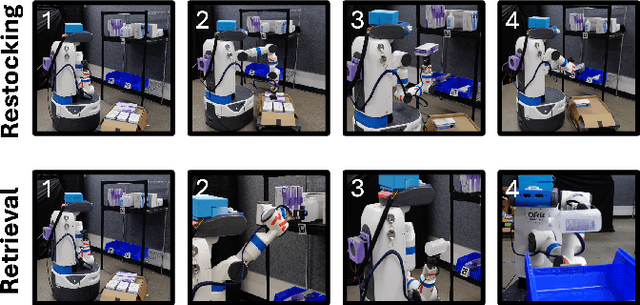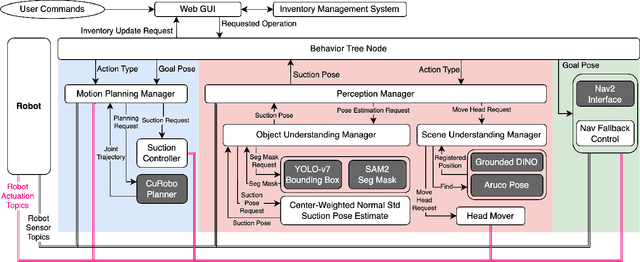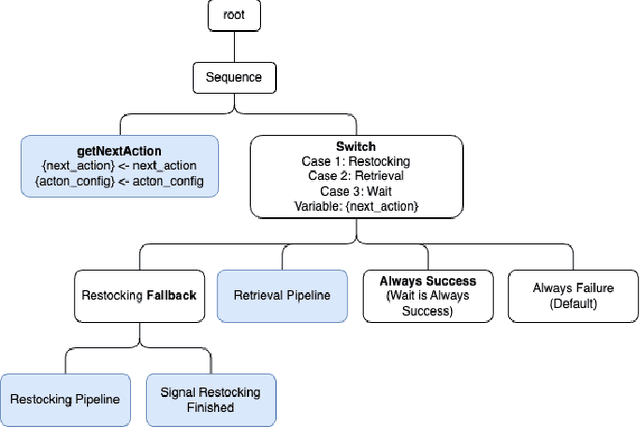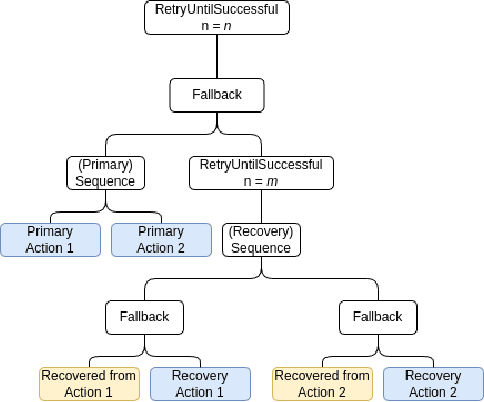Jinkai Qiu
ORB: Operating Room Bot, Automating Operating Room Logistics through Mobile Manipulation
Sep 19, 2025



Abstract:Efficiently delivering items to an ongoing surgery in a hospital operating room can be a matter of life or death. In modern hospital settings, delivery robots have successfully transported bulk items between rooms and floors. However, automating item-level operating room logistics presents unique challenges in perception, efficiency, and maintaining sterility. We propose the Operating Room Bot (ORB), a robot framework to automate logistics tasks in hospital operating rooms (OR). ORB leverages a robust, hierarchical behavior tree (BT) architecture to integrate diverse functionalities of object recognition, scene interpretation, and GPU-accelerated motion planning. The contributions of this paper include: (1) a modular software architecture facilitating robust mobile manipulation through behavior trees; (2) a novel real-time object recognition pipeline integrating YOLOv7, Segment Anything Model 2 (SAM2), and Grounded DINO; (3) the adaptation of the cuRobo parallelized trajectory optimization framework to real-time, collision-free mobile manipulation; and (4) empirical validation demonstrating an 80% success rate in OR supply retrieval and a 96% success rate in restocking operations. These contributions establish ORB as a reliable and adaptable system for autonomous OR logistics.
SORT3D: Spatial Object-centric Reasoning Toolbox for Zero-Shot 3D Grounding Using Large Language Models
Apr 25, 2025Abstract:Interpreting object-referential language and grounding objects in 3D with spatial relations and attributes is essential for robots operating alongside humans. However, this task is often challenging due to the diversity of scenes, large number of fine-grained objects, and complex free-form nature of language references. Furthermore, in the 3D domain, obtaining large amounts of natural language training data is difficult. Thus, it is important for methods to learn from little data and zero-shot generalize to new environments. To address these challenges, we propose SORT3D, an approach that utilizes rich object attributes from 2D data and merges a heuristics-based spatial reasoning toolbox with the ability of large language models (LLMs) to perform sequential reasoning. Importantly, our method does not require text-to-3D data for training and can be applied zero-shot to unseen environments. We show that SORT3D achieves state-of-the-art performance on complex view-dependent grounding tasks on two benchmarks. We also implement the pipeline to run real-time on an autonomous vehicle and demonstrate that our approach can be used for object-goal navigation on previously unseen real-world environments. All source code for the system pipeline is publicly released at https://github.com/nzantout/SORT3D .
 Add to Chrome
Add to Chrome Add to Firefox
Add to Firefox Add to Edge
Add to Edge